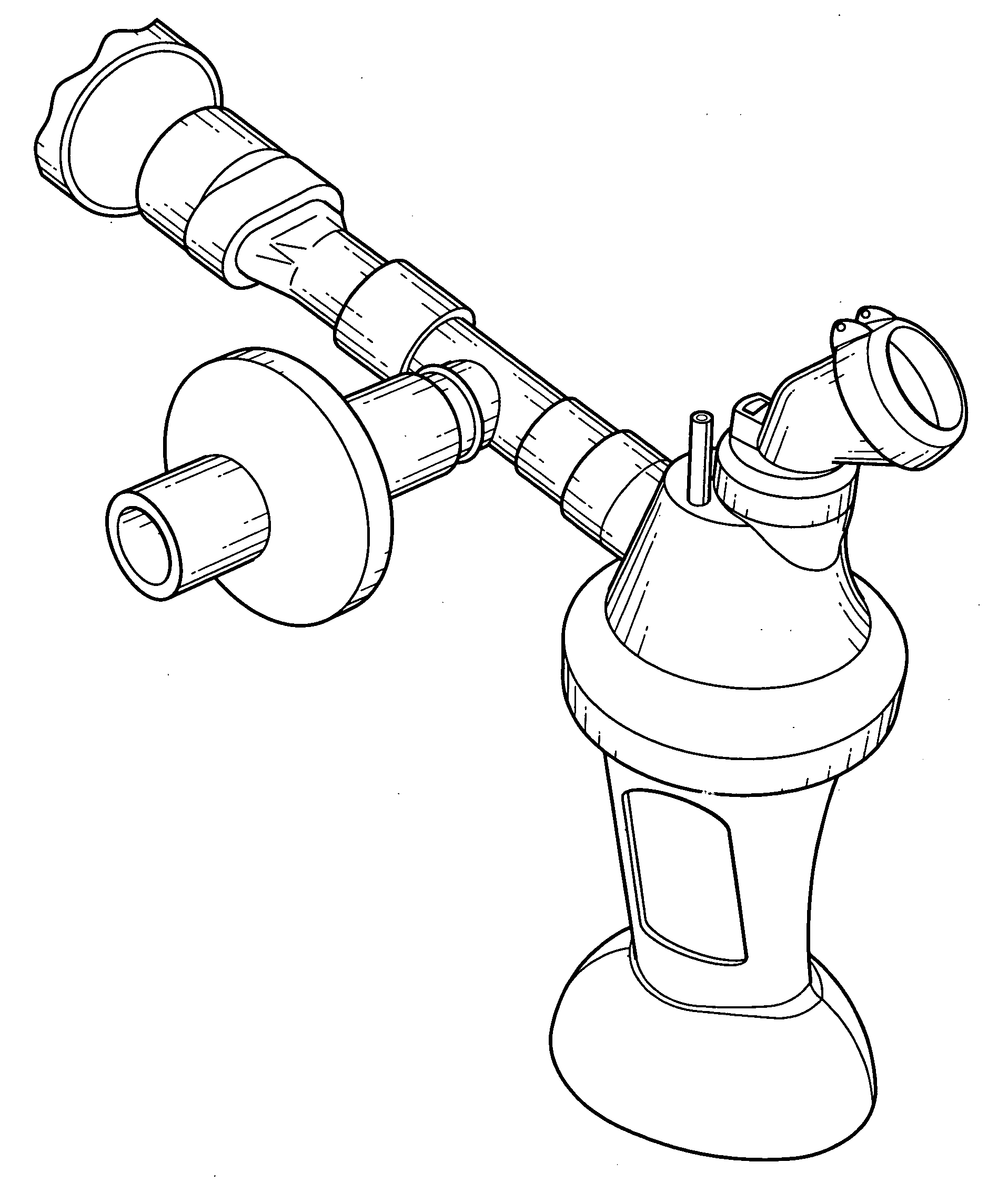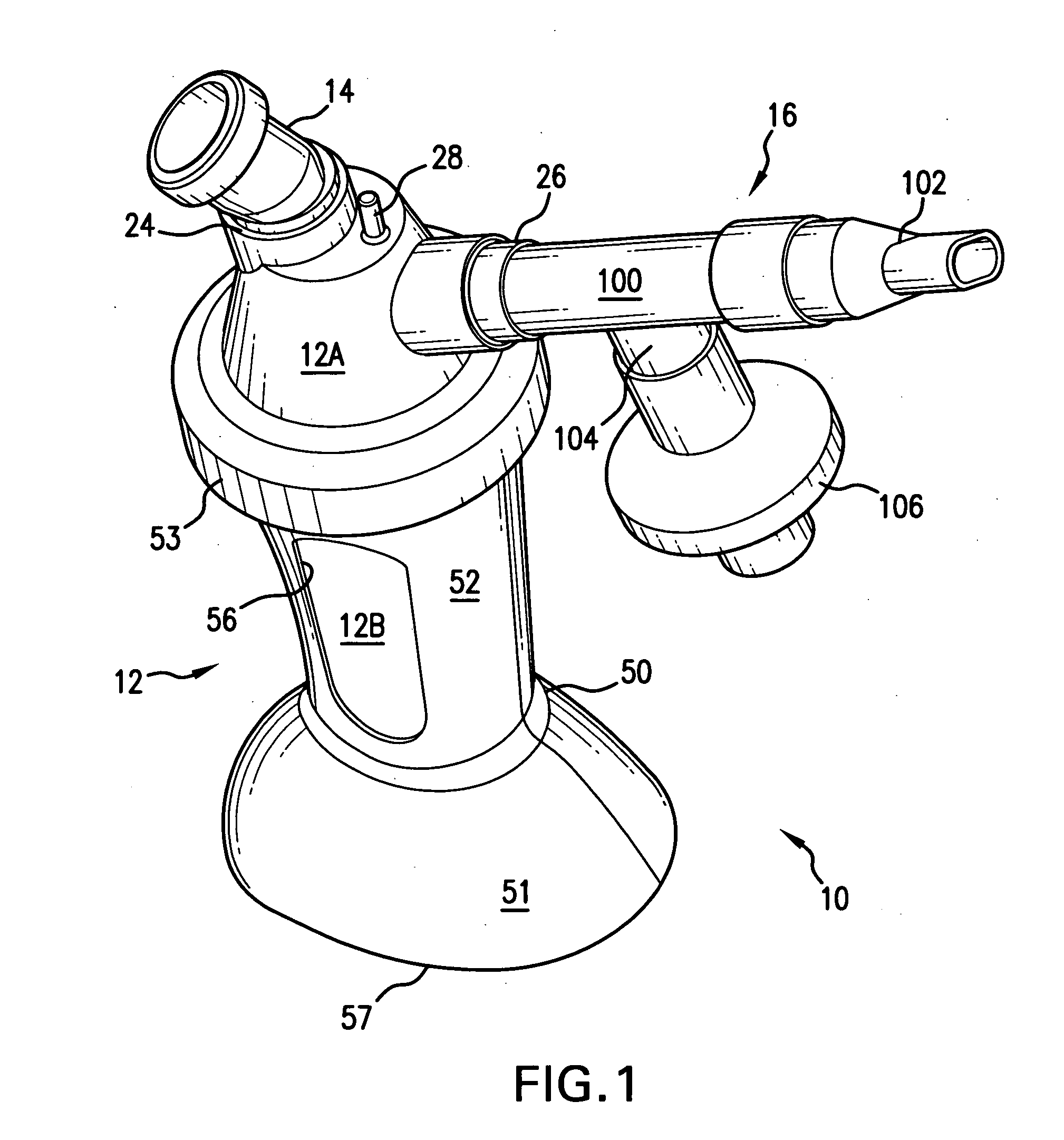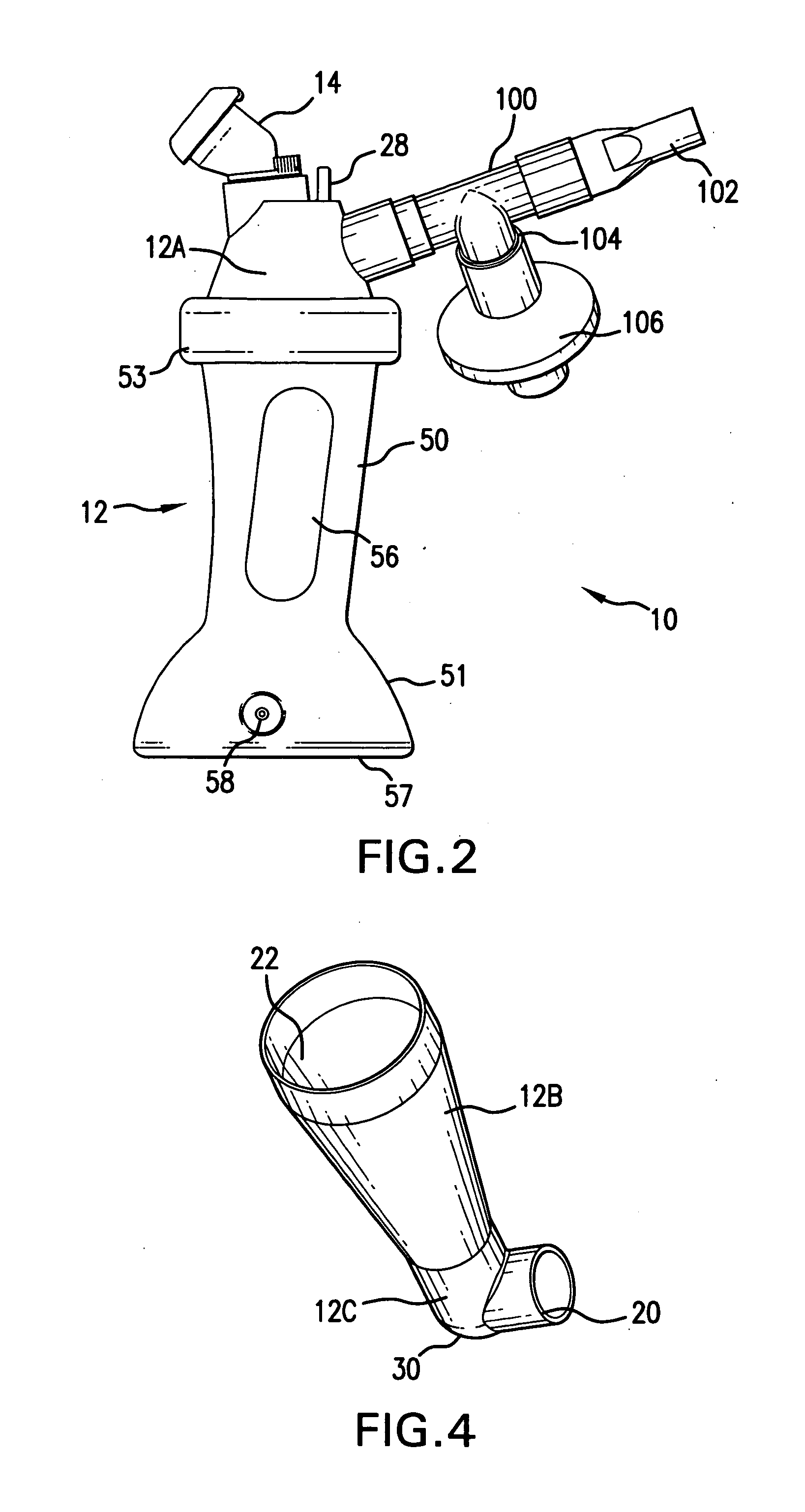Aerosolization device
a technology of aerosolized medicaments and devices, which is applied in the direction of other medical devices, spraying apparatuses, inhalators, etc., can solve the problems of large-scale devices for delivering aerosolized medicaments, difficult to use in certain settings, and high cost of large-scale devices such as vaccinations, so as to reduce the need for systemically administered antibiotics
- Summary
- Abstract
- Description
- Claims
- Application Information
AI Technical Summary
Benefits of technology
Problems solved by technology
Method used
Image
Examples
example 1
[0163]In this Example an in-vitro delivered dose and particle size distribution (PSD) of the device of FIG. 1 was measured, using a dose of 400 mg of amikacin (125 mg / ml; 3.2 ml). Thus, the in-vitro percentage inhaled mass of amikacin sulfate at the mouthpiece under simulated patient breathing was quantified. Under the following conditions: Tidal Volume (TV) was 500 mL; Respiratory rate (RR) was 15 and an inspiratory to expiratory ratio was 2:3. Three devices were tested. Also, an in-vitro particle size distribution (PSD) at the was determined. Mass balance was determined at the end of the first inhaled mass test run. Breathing parameters of the ventilator were verified pre-and post-inhaled mass test runs. The experimental set up is depicted in FIG. 9.
Results and Discussion.
[0164]FIG. 10 is a stacked graph showing 98% mass balance after one run. It can be seen that 86% was delivered as measured by the washing and elution method described herein, which 5% and 6% remained in the chamb...
example 2
[0169]In this Example, inhaled mass, and nebulization times, for a device of the present invention, as illustrated in FIG. 1, was measured for three different orientations with respect to the central axis AA: −45 degrees, 0 degrees and +45 degrees, i.e. tipped over toward the simulated patient, upright, and tipped away from the simulated patient, respectively. Since the aerosolized outlet port is inclined at an upward angle (see FIG. 1) of about 20, this resulted in the mouthpiece being angled at about −25°, 20° and 65° respectively. Test conditions were as described in Example 1. Three devices, comprising Aerogen nebulizers, as depicted in FIGS. 1 and 6 were used for the test.
Results and Discussion
[0170]Nebulization times as a function of orientation (average of three devices) were found to be: −45=10 minutes; 0=12 minutes and +45=11 minutes. The nebulizers were found to have an estimated flow rate of about 0.36 mL / min (nebulizer #1); 0.25 mL / min (nebulizer #2); 0.36 mL / min (nebuli...
PUM
| Property | Measurement | Unit |
|---|---|---|
| Length | aaaaa | aaaaa |
| Angle | aaaaa | aaaaa |
| Fraction | aaaaa | aaaaa |
Abstract
Description
Claims
Application Information
 Login to View More
Login to View More - R&D
- Intellectual Property
- Life Sciences
- Materials
- Tech Scout
- Unparalleled Data Quality
- Higher Quality Content
- 60% Fewer Hallucinations
Browse by: Latest US Patents, China's latest patents, Technical Efficacy Thesaurus, Application Domain, Technology Topic, Popular Technical Reports.
© 2025 PatSnap. All rights reserved.Legal|Privacy policy|Modern Slavery Act Transparency Statement|Sitemap|About US| Contact US: help@patsnap.com



